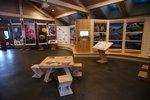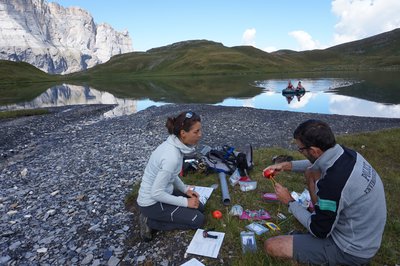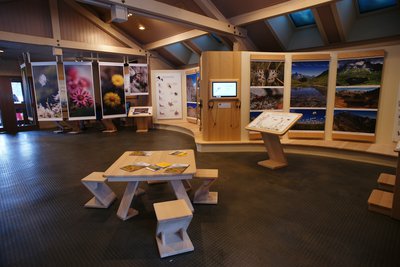The big loop trail of Lac d'Anterne and Lac de Pormenaz

Passy
The big loop trail of Lac d'Anterne and Lac de Pormenaz
Hard
6h30
20,4km
+1326m
-1326m
Embed this item to access it offline
At the base of the Rochers des Fiz, you'll discover Anterne and Pormenaz lakes. All along the way, the Passy Nature Reserve offers magnificent views of Mont Blanc and the surrounding summits.
Attachment
- Downloadpdf
la-grande-boucle-des-lacs-danterne-et-de-pormenaz
Credit: Points d'intérêts du parcours - Asters-CEN74
21 points of interest
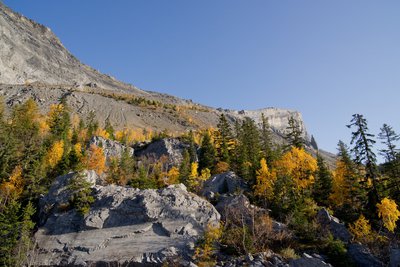
Le Dérochoir à l'automne - Julien Heuret - CEN 74 
Overlooking the Dérochoir
The Dérochoir is the product of a series of landslides. The first known and documented landslide dates back to 1471. The second and last, for the time being, was in 1751. At the foot of the cliff is a huge landslide cone that forms an unsteady slope. These landslides made it possible to cross the Barre des Fiz.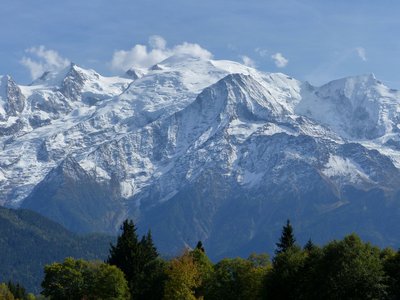
Panorama sur le Mont-Blanc depuis Plaine-Joux - Lucie Rousselot - CEN 74  Peak
PeakThe mont Blanc before the rise of mountaineering
A lot of mountaineers have dreamt of climbing Mont Blanc, the highest peak in Western Europe. But this has not always been the case. In the past, the mountains instilled fear and superstition in their local inhabitants, as evidenced by the names given to the summits ("cursed mountain", "devil's spikes"...). Only shepherds, chamois hunters and stonemasons (extractors of rock crystals) frequented these hostile areas. The first ascents were made by daring foreigners who hired these experienced mountaineers to provide guidance.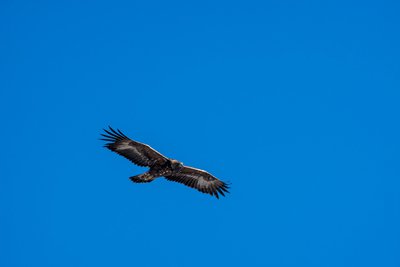
Aigle royal en vol - Julien Heuret - CEN 74  Fauna
FaunaThe Golden Eagle
It's a predator, armed for the hunt! Thanks to its large, wide wings, it glides high into the sky in search of prey. Its exceptional eyesight spots marmots (its favourite meal), hares, foxes or ptarmigan, and sometimes even young chamois or ibex! Its prominent eyebrow arch acts as a sun shield when it swoops down to snatch its prey. It is equipped with talons for grabbing and a powerful, hooked sharp beak for tearing flesh.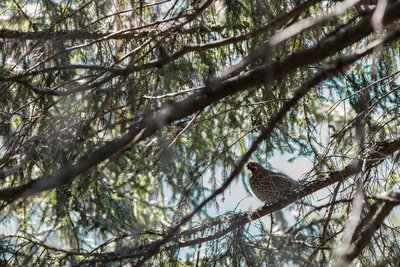
Gélinotte des bois - Julien Heuret - CEN 74  Fauna
FaunaThe Hazel Grouse
This is the smallest and most elusive of the mountain Galliformes species. It is much less well known than the black grouse or the rock ptarmigan because it lives exclusively in the forest! But it is just as important from a biological and scientific point of view: this species is an excellent indicator of environmental change. Its specific requirements in terms of vegetation and variety of tree species put it at risk in the face of poor forest management. This is one of the main causes of the species' decline.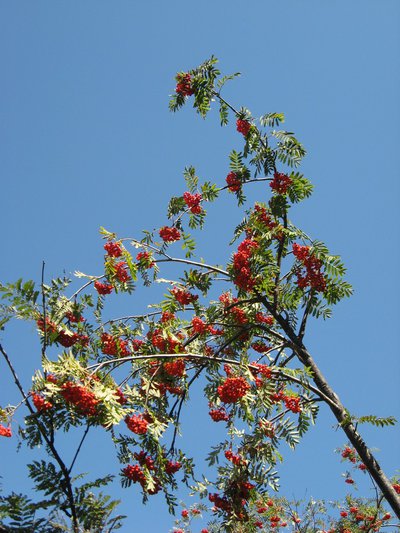
Sorbes - Julien Heuret - CEN 74  Flora
FloraThe Mountain Ash
It is a small tree that grows on the edge of forests. Its fruit, called "sorbs", are orangey red berries that are very popular with thrushes and blackbirds. They can be used to make brandy, jelly, or jam. Just make sure you pick them before they are ripe, otherwise, they may become toxic! In the reserve, the mountain ash is being studied as part of a collaborative science programme designed to measure the impact of climate change in the mountains.
Marmotte - Frank Miramand - CEN 74  Fauna
FaunaWhistly song of a marmot
The Marmot is the favourite food of the Golden Eagle and, to a lesser extent, of the Fox. Always alert, the marmot surveys its surroundings to avoid being caught. Standing upright on its paws, its iconic stance reminds of a candle atop of a chandelier. Thanks to its very wide field of vision and its highly effective hearing and sense of smell, nothing escapes its notice. In the event of an emergency, it warns others with an audible cry: high-pitched and brief in the case of an airborne hazard, whistled and repeated in the case of a ground hazard. And that danger can be you!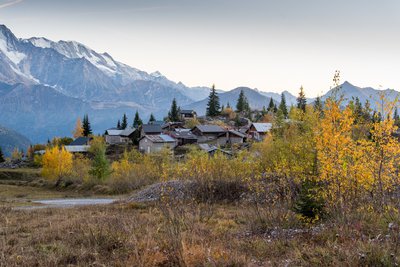
Chalets d'Ayères à l'automne - Julien Heuret - CEN 74 
The alpine cabin
The alpine cabine is a small building which, gattered with others, forms a small hamlet.
These constructions were originally intended for the organization of agricultural life in the mountains. These cabins were used in the summer to shelter the shepherds and their family. They were also used for milking and the production of cheese and other dairy products.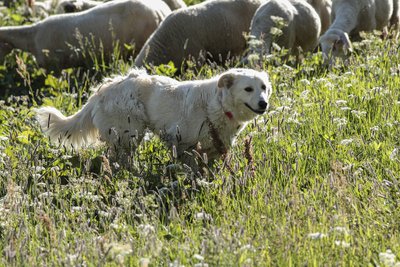
Chien de protection des troupeaux - Geoffrey Garcel - CEN 74 
Livestock guardian dogs
These are guardian dogs, so their use is permitted in nature reserves. They are there to defend sheep and lambs from attacks by large predators, such as wolves. Often large in size, these dogs, known as "molossoids", dedicate their lives to protecting the livestock to which they are deeply attached. When approaching the herd, it is important to remain aware of their attitude and to adapt to it, while following simple instructions: - Keep your distance from the herd (go around it if possible) - Call out loudly to the herds and dogs to avoid surprising them - Stay calm and avoid sudden movements, keep walking without running. Don't hesitate to speak softly to them so that they get used to you and accept your presence. - Avoid looking dogs in the eyes and try to ensure that you always have an object or an obstacle between you and the dog.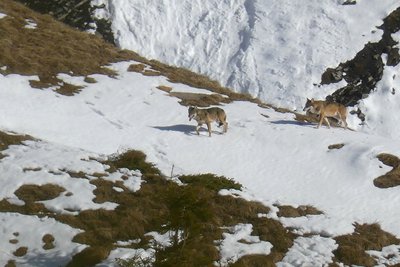
Loup gris - Anne-Laure Martin  Fauna
FaunaThe wolf
Wolves have been making a comeback in France on their own since the 1990s. Originating in Italy, the species first colonised the southern Alps, then the entire Alpine region. Since the summer of 2019, its presence has been confirmed in some of the Haute-Savoie nature reserves, which is why guard dogs are kept around several herds. The wolf is a carnivore. It feeds mainly on wild animals such as chamois and roe deer. But it can also eat sheep, especially when the herds are not guarded. To avoid interfering with the dogs' duties, please follow the instructions!
Gentiane jaune - Julien Heuret - CEN 74  Flora
FloraThe Great yellow Gentian
This large perennial plant, over 1 m high, can be found in meadows, moorland and forest clearings in the mountain and sub-alpine regions. It is used in phytotherapy, but should not be confused with the highly poisonous white alder, which it grows alongside of and closely resembles! The only difference lies in the flowers. Gentian flowers are yellow. Outside the blooming season, you should take a closer look at the leaves. Gentian leaves face each other on the stem, while adler leaves are on opposite sides of the stem.
Deux Chocards à bec jaune en vol - Julien Heuret - CEN 74  Fauna
FaunaThe Alpine Chough
This well-known mountain predator lives mainly in large, noisy flocks, with impressive headcounts, especially in winter, when snowfall at high altitudes forces it into the valleys to find food! It is often mistakenly referred to as a "jackdaw", when in fact it is a completely different species of corvid, which is more likely to be found on the lowlands! The chough can be recognised by its black plumage, lemon-yellow beak and red feet. It is an avid aerobatic performer, and you'll no doubt be amazed by their acrobatic manuevers!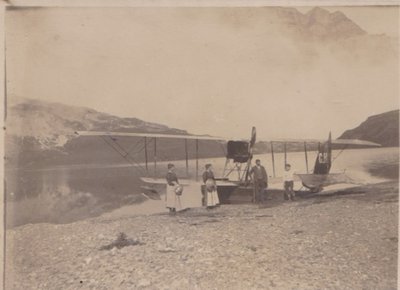
Hydravion au lac d'Anterne - Archive - Collection Jean Sesiano 
A Swiss hydroplane on the lake of Anterne
In August 1920, a hydroplane left Lausanne, on the shores of Geneva lake, to fly over the Alps.
The aircraft, which had just been overhauled, had engine trouble above the Chamonix valley. The pilot noticed the lake of Anterne and estimated that he could land there, which he succeeded. The lake being too small, the plane, even repaired, could not take off again. The engine was removed, and taken down to the valley, and the abandoned hydroplane gradually disintegrated.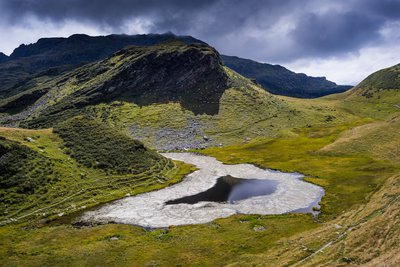
Laouchet pendant l'été - Julien Heuret - CEN 74  Lake
LakeThe shallow ponds of Pormenaz
These small, shallow bodies of water are wrongly called lakes. Here they are called "laouchets", meaning "small bodies of water". These shallow bodies of water are quite biodiverse and are home to a rare and protected species, the Sparganium or the bur-reed. Eventually, these ponds will fill in and become peat bogs.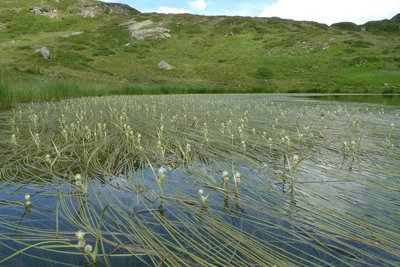
Floraison du Rubanier à feuilles étroites - Julien Heuret - CEN 74  Flora
FloraFloating bur-reef
What you see on the surface of the lake is not a seaweed but a flowering plant with long, narrow leaves that float on the water like shimmering ribbons. The bur-reef lives in the calm, cold, shallow waters of mountain lakes and ponds. Underwater, it has stems filled with nutrient reserves: known as rhizomes. As the lake is gradually filled in with earth, the bur-reef population is expanding by bringing in its stems and withered leaves every winter.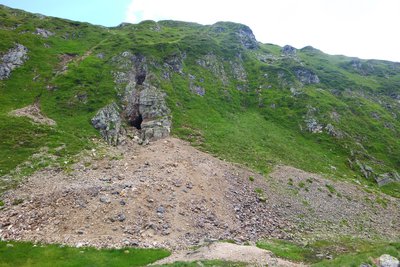
Mine à Pormenaz - Julien Heuret - CEN 74 
Pormenaz mines
The Pormenaz mountain is strewn with mines that were operated from Gallo-Roman times until the 12th century. Silver lead, gold and copper pyrites and antimony were extracted from these mines. Silver and lead were the most sought-after metals. Around 125 kg of lead and 1 kg of silver were extracted from one tonne of ore.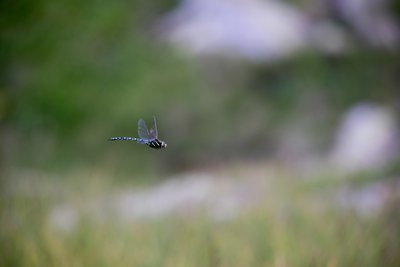
Julien Heuret - CEN 74  Fauna
FaunaDragonflies
Odonates, more commonly known as dragonflies, belong to the insect family. They undergo two stages in their lives: a "larval" phase, which is aquatic, followed by a terrestrial phase, which marks adulthood. Dragonflies are predators: they are carnivores, feeding on different types of prey depending on their life stage. They also prey on other insects. Their habitat is strongly influenced by climatic conditions, and any change will have a major impact on their numbers. The destruction of their habitat, wetlands, is one of the main threats to dragonflies.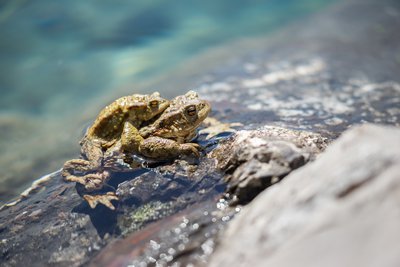
Amplexus crapaud - Julien Heuret - CEN 74  Fauna
FaunaThe common Toad
Kissing a toad and turning it into Prince Charming is a myth! You should never touch this protected species, which is vulnerable to the many diseases that humans can transmit to it. Instead, look into its eyes to see its horizontal pupil and orange iris. You can also see its parotoid glands at the back of its head. These are used to excrete a venom called "bufotoxin" to ward off any predators. The toad is a completely different species from the frog, living for the most part in the forest, out of the water, and only coming back to the water during the breeding season!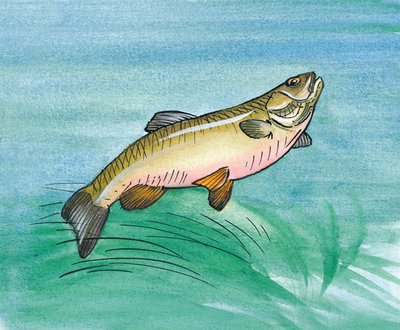
@JLFouquer  Fauna
FaunaThe Common Minnow and the Common Chub
The minnow is very common in highly oxygenated waters. The reason for its presence in high-altitude lakes is that trout fishing is common there. It is used as bait by anglers, which has enabled this species to spread to mountain lakes. The chub is a fairly large fish, widespread in France. It is an omnivore, meaning it eats everything. In many European countries, particularly in Eastern Europe, it is a major culinary delicacy.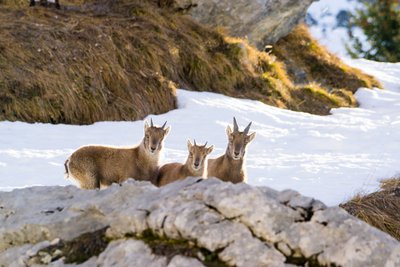
Bouquetins - Julien Heuret - CEN 74  Fauna
FaunaAlpine ibex
The Alpine ibex is not particularly shy, especially compared with the chamois, with which it often shares its territory. Unlike most other mountain species, it remains at high altitudes even when winter and snow are approaching. It then heads for the ridges and snow-free areas where it can more easily find the grasses on which it feeds. This search for food takes a lot of energy. So, if you come across one, don't approach it and let it move away at its own pace so that it doesn't expend its energy unnecessarily, especially in winter.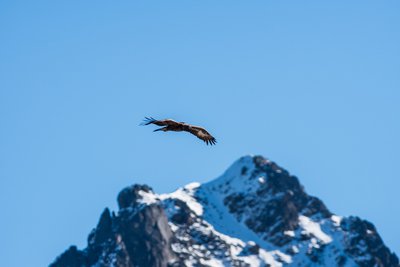
Aigle royal en vol - Julien Heuret - CEN 74  Fauna
FaunaGolden Eagle cainism
Two chicks will hatch from their eggs just a few days apart in their rock wall nest. Only one will have a chance of surviving: the weaker one will be eliminated by the stronger one! In biology, this behaviour is called "cainism". It is a common phenomenon among daytime birds of prey, part of a species survival strategy that selects the strongest offspring from birth to increase their chances of reaching maturity. It's a huge undertaking for the parents to feed a ravenous hatchling, which can grow from 100g at birth to 5kg by the time it flies!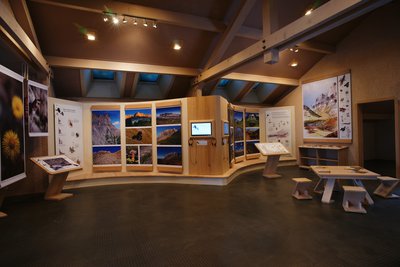
Muséographie Maison de la réserve - Julien Heuret - CEN 74 
La Maison de la Réserve
The exhibition an information office Maison de la Réserve naturelle de Passy is located in Plaine-Joux and welcomes you during the school holidays. The permanent exhibition about fauna, flora and landscapes will open the doors to the nature reserve. You may find answers to some of your questions here and can admire the wild species hidden in nature. If the Maison de la Réserve Naturelle is closed, don’t worry, go up to the passageway. There is permanent free access to information about former (geological times) and present landscapes, the wonders of biodiversity, and the great challenges of the mountains of the future (water, glaciers, global warming...).
Description
Always exercise caution and plan ahead when hiking. Asters, CEN 74 cannot be held responsible for any accident or incident that may occur on this trail. The Argentières path on your way back is exposed and vertiginous. An alternative descent is available.
- Departure : Maison de la Réserve naturelle de Passy
- Arrival : Maison de la Réserve naturelle de Passy
- Towns crossed : Passy and Servoz
Altimetric profile
Sensitive areas
Along your trek, you will go through sensitive areas related to the presence of a specific species or environment. In these areas, an appropriate behaviour allows to contribute to their preservation. For detailed information, specific forms are accessible for each area.
- Impacted practices:
- Aerial, , Land, Vertical
- Contact:
- Asters - Conservatoire d'espaces naturels de Haute Savoie
contact@cen-haute-savoie.org
Recommandations
This itinerary runs through the nature reserve, please consult the relevant regulations.
Information desks
Transport
Bus SAT Mont-Blanc L85
Access and parking
Get to the Passy Plaine Joux resort via the D43 road. Car park at the entrance to the resort. The resort is also accessible by bus L85 (SAT Mont-Blanc).
Parking :
Plaine Joux station
Report a problem or an error
If you have found an error on this page or if you have noticed any problems during your hike, please report them to us here:
